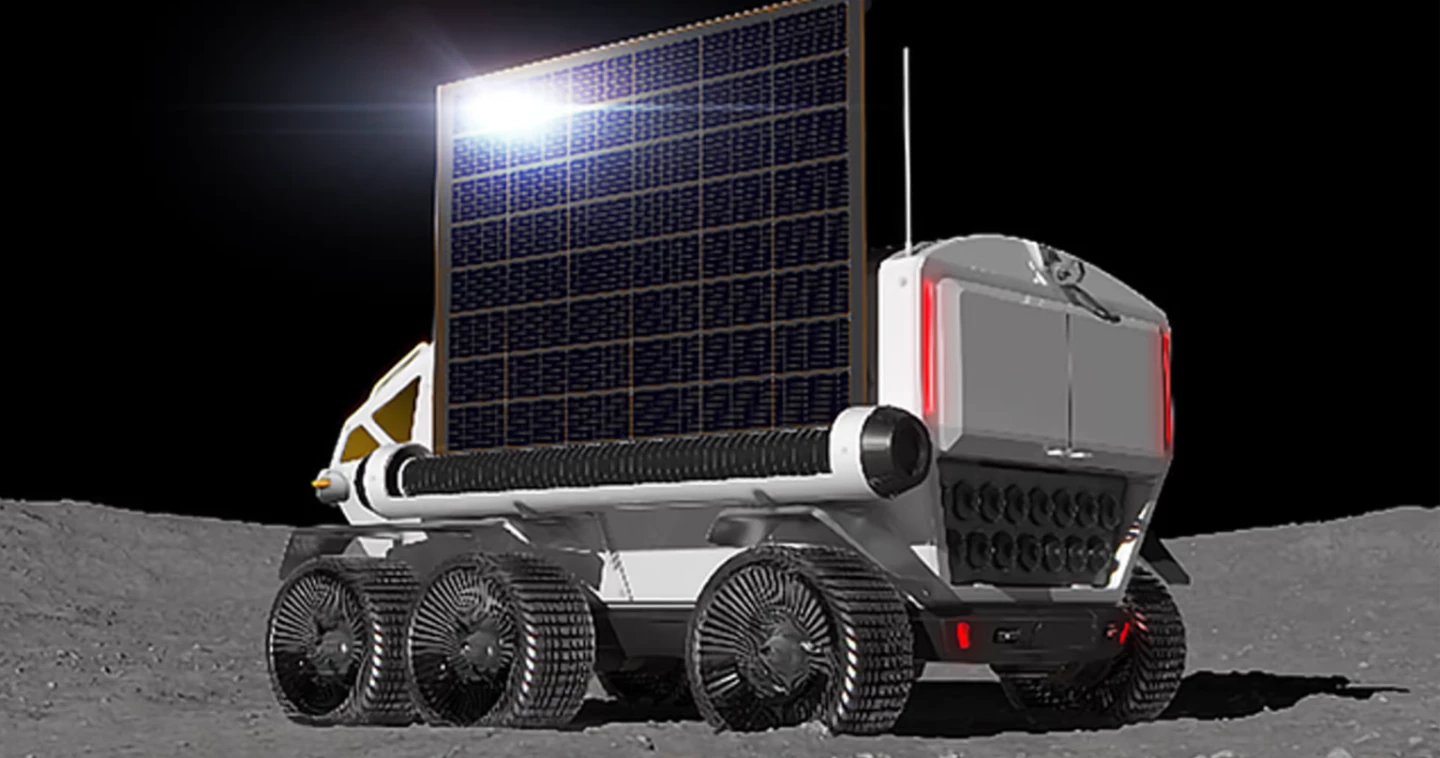When NASA returns to the Moon, its astronauts will enjoy tooling around in a pressurized camper van courtesy of JAXA and Toyota. The two-person vehicle is part of a US/Japan agreement that includes putting the first Japanese astronauts on the Moon.
It's beginning to look like NASA's program to establish a permanent human presence on the Moon will resemble a car show as much as it does a scientific expedition. The space agency recently awarded contracts to develop an open off road vehicle to carry astronauts around on the Moon, though these are small and the driver and passengers have to wear spacesuits. Meanwhile, the Japanese vehicle being developed by JAXA and Toyota is a mobile outpost where the crew can live and work for up to 30 days in a shirt sleeve environment.
No doubt while wearing loud Hawaiian shirts.

The new camper van, for want of a better term, measures 6.0 x 5.2 x 3.8 m (19.7 x 17.1 x 12.5 ft) and will be powered by a hydrogen fuel cell, supplemented by solar panels that may recycle waste water by converting it back into hydrogen and oxygen for power. It's estimated to have a range of 10,000 km (6,200 miles) and will be used to explore the south polar region.
Under the new agreement signed by NASA Administrator Bill Nelson and Japan’s Minister of Education, Culture, Sports, Science and Technology (MEXT) Masahito Moriyama at NASA headquarters in Washington, DC on April 9, 2024, JAXA will provide the vehicle while NASA will transport it to the Moon as part of the Artemis VII mission in 2031. Once on site, this pressurized 'home-a-long-way-away-from-home' is expected to operate for 10 years.
In addition to this, the new agreement will see the first Japanese astronaut travel to the Gateway cislunar outpost – and two more will be the first non-American astronauts to set foot on the Moon on a NASA mission.
"The pressurized rover will be a powerful contribution to the overall Artemis architecture as Japan and the U.S. go hand in hand with international and industry partners to the lunar surface and beyond," said Yamakawa. "JAXA is ready to assist MEXT and push this forward with our science and technological expertise to establish sustainable human presence on the Moon."
Source: NASA






